*Currently excuse typos as I typed this today! A more formal form will be coming in the near future!
Macroevolution
To show macroevolution you have to look at several different but similar groups that link together back in time. This can be an ancient reptile evolving into a mammal or an ancient monkey evolving into a human over time..but creationists misunderstand this because they want animals such as the "crocoduck". Evolution will never produce this because crocodiles are not ancestors of ducks...they share a common ancestor. If we want to show the macroevolution of crocodiles and ducks we must start with crocodiles and move backwards until its last common ancestor with all birds. You will see the macroevolution of crocodiles to simpler reptiles, which can then be traced back forward in time to the birds to the duck. A chimpanzee didn't evolve into a human and a gecko didn't evolve into a horse. They share common ancestors.

To find macroevolution with modern animals you must find the animals that are closely related and then move backwards through the next closest families. This is what we will be doing! We will be linking the big cats to animals such as civets, which are considered different "kinds" and even showing the similarities to other groups such as mongooses, dogs, and bears.
Since we are using animals alive today...they didn't evolve into each other but instead share characteristics. As the groups become less and less related, their shared characteristics also become less...and eventually they look completely different.
Every animal we look at shared a common ancestor and have evolved into different species since that since. What we can see with modern animals is the animals that have maintained more of the common ancestors features will actually be representing the ancient populations. The older the family the less they have in common with whatever animal you are looking at.
Macroevolution does not happen genetically as a cat cannot be born from a civet, but macroevolution is represented in the shared characteristics in modern animals. In this blog we will be linking the cats all the way down the line to civets and further.
Since we are using animals alive today...they didn't evolve into each other but instead share characteristics. As the groups become less and less related, their shared characteristics also become less...and eventually they look completely different.
Every animal we look at shared a common ancestor and have evolved into different species since that since. What we can see with modern animals is the animals that have maintained more of the common ancestors features will actually be representing the ancient populations. The older the family the less they have in common with whatever animal you are looking at.
Macroevolution does not happen genetically as a cat cannot be born from a civet, but macroevolution is represented in the shared characteristics in modern animals. In this blog we will be linking the cats all the way down the line to civets and further.
Creationist "kind" classification
According to Answers in Genesis and Creationwiki, if animals can interbreed they are the same created "kind". They state that even non-breeding can be the same "kind", admitting that there might be blurring lines. They also state that the scientific classification of Family is very similar to a "kind", but they believe there is some intermixing of these groups (really whenever they feel like it, no structure involved) so what they consider a "kind" is very confusing.
Answers Research Journal 4 (2011): 195-201.
Creation scientists believe that Noah fit all the animals in the Ark by bringing in original pairs of one "kind", in which can then mutate and speciate into all of the species today. (Yes, according to AiG they accept that animals can mutate and speciate from natural selection) This means that an original "cat kind" left the ark and became all of the species we know today...interbreeding or not. It is at the point above "kind" that they believe no transitional animals exist.Answers Research Journal 4 (2011): 195-201.
www.answersingenesis.org/articles/arj/v4/n1/Ark-kinds-Flood-baraminology-cognitum
They state " It is impossible to identify in such specimens many of the important features that have historically defined mammals, as soft tissue is nearly always absent. Even the skeletal remains can be fragmentary, making their placement difficult and severely limiting our understanding of how they appeared in life" (http://www.answersingenesis.org/articles/arj/v5/n1/mammalian-ark-kinds) so I will avoid using them but fossils are EXTREMELY important in understanding how families link together. The fossils are really just too difficult for them so they ignore them completely.
Answersingensis.org quote: “The concept of kind is important for understanding how Noah fit all the animals on the
Note: Creationists may recognize the Family classification but they completely ignore the next step up, the Suborder. It is completely left out of their websites...and this category happens to be THE category that bridges the Families together! Convenient.
Offical answers in genesis list of mammalian ark kinds: http://www.answersingenesis.org/articles/arj/v5/n1/mammalian-ark-kinds
Examples of species forming a "kind" from Answers in Genesis
Able to interbreed:- Lion + Tiger = Same "cat kind"
- Horse + Donkey = Same "horse kind"
- Wolf + Fox or Coyote + African wild dog = Still same "dog kind"
To keep things simple we will stick with 3 accepted "kinds", though a few others will be shown for comparison. These 3 groups are considered original ancestors and can never be linked together.
Answers in Genesis accepted "kinds" we will bridge together
 |
- Family - Viverridae (veh-vair-eh-day) - Everything they consider a civet.

- Family - Nandiniidae (nan-din-eh-day) - The strange accepted "kind" involving only one type of civet.
These 3 kinds can not only be linked together but can also then be linked to...
- Family - Herpestidae (herp-est-eh-day) - Mongoose
- Family - Hyaenidae (hi-aye-ee-neh-day) - Hyenas

- Family - Canidae (cane-eh-day) - Dogs, wolves, and foxes

- Family - Ursidae (urse-eh-day)- Bears

- and many more we dont have time for today
Most creationists cant even recognize where the "kinds" are even though creationists claim the lines between them are absolute and noticeable.
All you must do now is look at these animals and ask yourself is it a "cat kind", a "civet kind", an "african palm civet kind", or even if it belongs to other groups including the "mongoose kind". "bear kind" or "dog/fox kind"...so watch out for random foxes, bears, dogs, and raccoons!
By the way: These animals are not always in order of relatedness but each animal IS related to another in the group. There are also many more animals in between these showing the gradual shared characteristics, but we will only look at 8 today.
Let's start!
1.) Lion


2.) Leopard

3.) Clouded leopard

4.) Margay
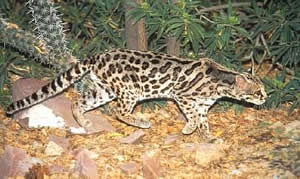

5.) Spotted Linsang and Banded Linsang
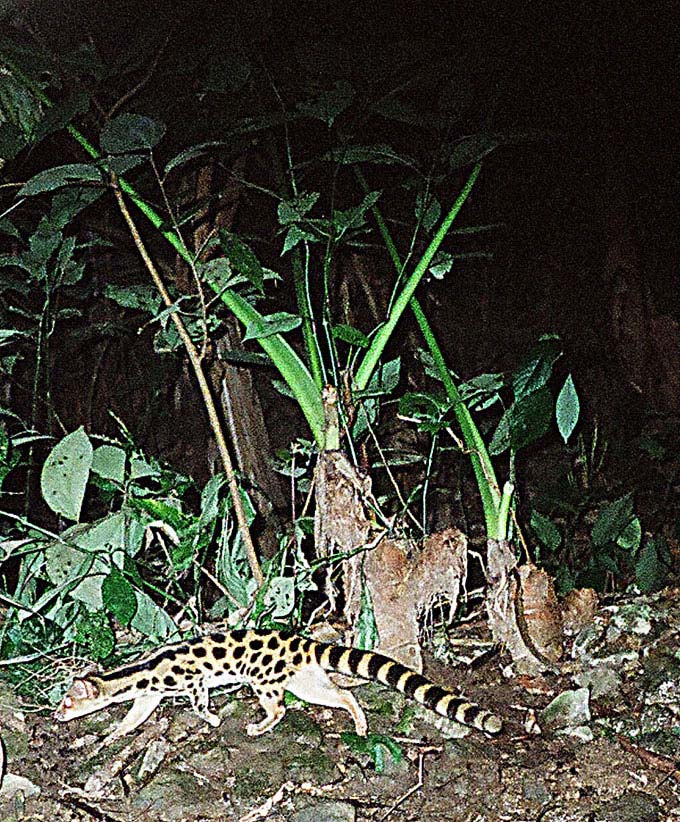

6.) Spotted Gennet


7.) Indian civet
(Remember this doesnt automatically place it in the "civet kind")

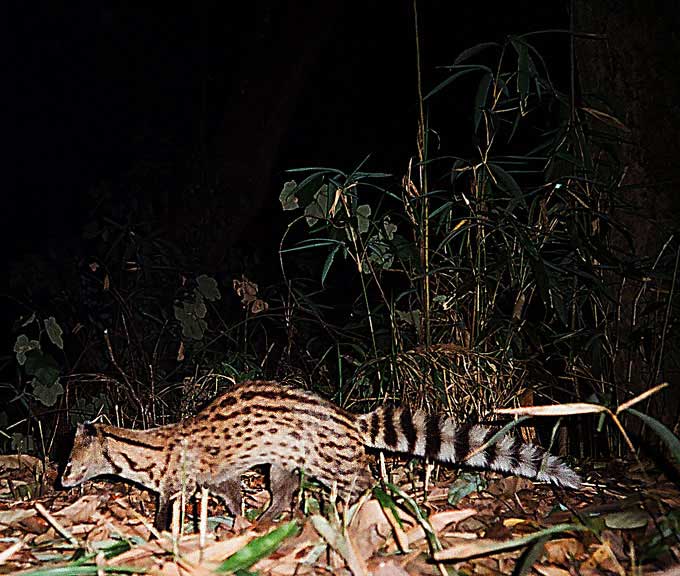

8.) Asian palm civet
(Remember this doesnt automatically place it in the "civet kind")





6.) Spotted Gennet


7.) Indian civet
(Remember this doesnt automatically place it in the "civet kind")



8.) Asian palm civet
(Remember this doesnt automatically place it in the "civet kind")

9.) African palm civet
(Remember this doesnt automatically place it in the "civet kind")



These next animals I will not name and are for the people who followed along in this blog. So what are these animals "kinds"? Are these cats? dogs/foxes? mongooses? bears? raccoons? weasels? something else?
1.)


2.)


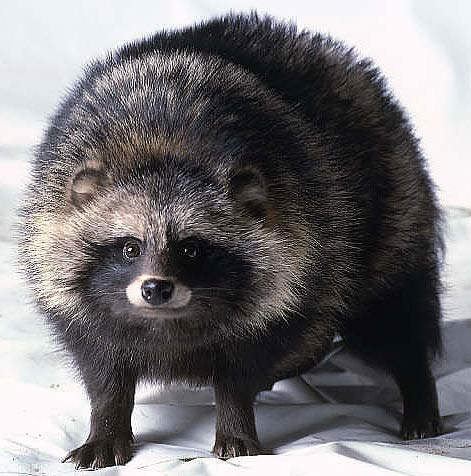
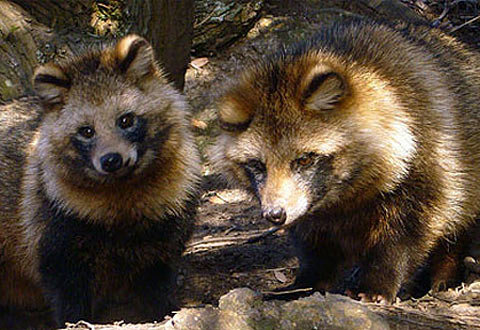



Answers - Scientific classifications and creationist "kinds"
1.) Lion
Scientific Classification
Family - Felidae
Suborder- Feliformia
Order - Carnivora
Answersingensis.org & Creationwiki.org
Considered to be the "cat kind", or Felidae by most creationists.
(http://creationwiki.org/Felidae)
Comments
The lion can interbreed with the other big cats (jaguar, tiger, leopard) with varying degrees of success from infertile but living offspring to stillborn. This animal is part of the "cat kind", or the Family Felidae and is part of the cat-like Feliformia.
2.) Leopard
Scientific Classification
Family - Felidae
Suborder- Feliformia
Order - Carnivora
Answersingenesis.org & Creationwiki.org
Considered to be the "cat kind", or Felidae by most creationists.
(http://creationwiki.org/Felidae)
Order - Carnivora
Answersingenesis.org & Creationwiki.org
Considered to be the "cat kind", or Felidae by most creationists.
(http://creationwiki.org/Felidae)
Comments
Can interbreed with the other big cats (jaguar, tiger, leopard) with varying degrees of success from infertile but living offspring to stillborn. This animal is part of the "cat kind", or the Family Felidae and is part of the cat-like Feliformia.
3.) Clouded leopard
Scientific Classification
Scientific Classification
Family - Felidae
Suborder- Feliformia
Order - Carnivora
Answersingenesis.org & Creationwiki.org
Considered to be the "cat kind", or Felidae by most creationists.
(http://creationwiki.org/Felidae)
Order - Carnivora
Answersingenesis.org & Creationwiki.org
Considered to be the "cat kind", or Felidae by most creationists.
(http://creationwiki.org/Felidae)
Comments
Unable to interbreed with the 4 big cats but still very cat-like. This animal is part of the "cat kind", or the Family Felidae and is part of the cat-like Feliformia.
4.) Margay
Scientific Classification
Scientific Classification
Family - Felidae
Suborder- Feliformia
Order - Carnivora
Answersingenesis.org & Creationwiki.org
Considered to be the "cat kind", or Felidae by most creationists.
(http://creationwiki.org/Felidae)
Comments
Belongs with the group including cheetahs and ocelots. Group can interbreed with varying degrees of success from infertile but living offspring to stillborn. Group as a whole unable to reproduce with any of the big cats. This makes sense as they have been separated from the big cats for longer. This animal is part of the "cat kind", or the Family Felidae and is part of the cat-like Feliformia.
5.) Spotted and Banded linsang
Scientific Classification
Family - Prionodontidae
Suborder - Feliformia
Order - Carnivora
Answersingenesis.org & Creationwiki.org
Not mentioned by Answers in Genesis or Creationwiki. Not even listed on the list of families of Carnivora. (http://creationwiki.org/Carnivora). In short, completely ignored.
Comments
The linsangs represent the closest group to the Felidae. The linsangs are quite cat-like and are often mistaken to be felines. This is because they still belong to the Suborder Feliformia, meaning they are related to the cats, and have cat-like features instead of dog-like features. Is it a coincidence that the closest living relative to cats linking to the civets is not mentioned...?
6.) Spotted Genet
Scientific Classification
Family - Viverridae
Suborder - Feliformia
Order - Carnivora
Answersingenesis.org & Creationwiki.org
Considered to be the"civet kind", or Viverridae by creationists. (http://creationwiki.org/Viverridae)
Comments
Cat-like carnivore thats also placed in the suborder Feliformia with the cats and linsangs. This animal is not considered a cat anymore and creationists don't recognize the similarities linking them to the felines.
7.) Indian civet
Scientific Classification
Family - Viverridae
Suborder - Feliformia
Order - Carnivora
Answersingensis.org & Creationwiki.org
Considered to be the"civet kind", or Viverridae by creationists. (http://creationwiki.org/Viverridae)
Comments
Cat-like carnivore thats also placed in the suborder Feliformia with the cats and linsangs. This animal is not considered a cat anymore and creationists dont recognize the similarities linking them to the felines.
8.) Asian palm civet
Scientific Classification
Family - Viverridae
Suborder - Feliformia
Order - Carnivora
Answersingensis.org & Creationwiki.org
Considered to be the"civet kind", or Viverridae by creationists. (http://creationwiki.org/Viverridae)
Comments
Cat-like carnivore that's also placed in the suborder Feliformia with the cats and linsangs. This animal is not considered a cat anymore and creationists don't recognize the similarities linking them to the felines.
9.) African palm civet
Scientific Classification
Order - Carnivora
Answersingensis.org & Creationwiki.org
Considered seperate family "African palm civet kind", or Nandiniidae, outside of civets and cats.
(http://www.answersingenesis.org/articles/arj/v5/n1/mammalian-ark-kinds)
Link broken on creationwiki.org (http://creationwiki.org/Carnivora)
Comments
Cat-like carnivore that's also placed in the suborder Feliformia with the cats and linsangs. This animal is not considered a cat anymore and creationists don't recognize the similarities linking them to the felines.
Summarized relations:
African palm civet split away from line earliest and maintains the primitive civet look
Genet, Indian civet, and Asian palm civet ancestor split away next and then split becoming the civets
Spotted linsang broke off the line right before the main Felidae cats and is similar to the previous african palm civet
Clouded leopard broke off after the Spotted linsang and can only sometimes breed with other older cats like Ocelot and Margay.
Lions, Leopards, Jaguars, and Tigers broke off after clouded leopards and can still sometimes breed within the group
Hyenas developed from civet-like ancestors so their ancestor broke off before the Felidae and has developed into its dog-like form since.
To see how each is related to each other in detail, wikipedia is actually great! Just look up Carnivora, Feliformia, Viverridae, Nandiniidae, and Pronodontidae.
Extra pictures
1.) Banded mongoose - Creationists ="Mongoose kind" / Science = Feliformia (cat-like carnivore)
2.) Yellow mongoose - Creationists ="Mongoose kind" / Science = Feliformia (cat-like carnivore)
3.) Fennec fox - Creationists ="Dog kind" / Science = Caniformia (dog-like carnivore)
4.) Raccoon dog - Creationists ="Dog kind" / Science = Caniformia (dog-like carnivore)
5.) Red panda - Creationists ="Red panda kind" / Science = Caniformia (dog-like carnivore)
6.) Brown hyena - Creationists ="Hyena kind"/ Science = Feliformia (cat-like carnivore)
Order - Carnivora
Answersingenesis.org & Creationwiki.org
Considered to be the "cat kind", or Felidae by most creationists.
(http://creationwiki.org/Felidae)
Comments
Belongs with the group including cheetahs and ocelots. Group can interbreed with varying degrees of success from infertile but living offspring to stillborn. Group as a whole unable to reproduce with any of the big cats. This makes sense as they have been separated from the big cats for longer. This animal is part of the "cat kind", or the Family Felidae and is part of the cat-like Feliformia.
Scientific Classification
Family - Prionodontidae
Suborder - Feliformia
Order - Carnivora
Answersingenesis.org & Creationwiki.org
Not mentioned by Answers in Genesis or Creationwiki. Not even listed on the list of families of Carnivora. (http://creationwiki.org/Carnivora). In short, completely ignored.
Comments
The linsangs represent the closest group to the Felidae. The linsangs are quite cat-like and are often mistaken to be felines. This is because they still belong to the Suborder Feliformia, meaning they are related to the cats, and have cat-like features instead of dog-like features. Is it a coincidence that the closest living relative to cats linking to the civets is not mentioned...?
6.) Spotted Genet
Scientific Classification
Family - Viverridae
Suborder - Feliformia
Order - Carnivora
Answersingenesis.org & Creationwiki.org
Considered to be the"civet kind", or Viverridae by creationists. (http://creationwiki.org/Viverridae)
Comments
Cat-like carnivore thats also placed in the suborder Feliformia with the cats and linsangs. This animal is not considered a cat anymore and creationists don't recognize the similarities linking them to the felines.
7.) Indian civet
Scientific Classification
Family - Viverridae
Suborder - Feliformia
Order - Carnivora
Answersingensis.org & Creationwiki.org
Considered to be the"civet kind", or Viverridae by creationists. (http://creationwiki.org/Viverridae)
Comments
Cat-like carnivore thats also placed in the suborder Feliformia with the cats and linsangs. This animal is not considered a cat anymore and creationists dont recognize the similarities linking them to the felines.
8.) Asian palm civet
Scientific Classification
Family - Viverridae
Suborder - Feliformia
Order - Carnivora
Answersingensis.org & Creationwiki.org
Considered to be the"civet kind", or Viverridae by creationists. (http://creationwiki.org/Viverridae)
Comments
Cat-like carnivore that's also placed in the suborder Feliformia with the cats and linsangs. This animal is not considered a cat anymore and creationists don't recognize the similarities linking them to the felines.
9.) African palm civet
Scientific Classification
Family - Nandiniidae
Suborder - FeliformiaOrder - Carnivora
Answersingensis.org & Creationwiki.org
Considered seperate family "African palm civet kind", or Nandiniidae, outside of civets and cats.
(http://www.answersingenesis.org/articles/arj/v5/n1/mammalian-ark-kinds)
Link broken on creationwiki.org (http://creationwiki.org/Carnivora)
Comments
Cat-like carnivore that's also placed in the suborder Feliformia with the cats and linsangs. This animal is not considered a cat anymore and creationists don't recognize the similarities linking them to the felines.
Summarized relations:
African palm civet split away from line earliest and maintains the primitive civet look
Genet, Indian civet, and Asian palm civet ancestor split away next and then split becoming the civets
Spotted linsang broke off the line right before the main Felidae cats and is similar to the previous african palm civet
Clouded leopard broke off after the Spotted linsang and can only sometimes breed with other older cats like Ocelot and Margay.
Lions, Leopards, Jaguars, and Tigers broke off after clouded leopards and can still sometimes breed within the group
Hyenas developed from civet-like ancestors so their ancestor broke off before the Felidae and has developed into its dog-like form since.
To see how each is related to each other in detail, wikipedia is actually great! Just look up Carnivora, Feliformia, Viverridae, Nandiniidae, and Pronodontidae.
Extra pictures
1.) Banded mongoose - Creationists ="Mongoose kind" / Science = Feliformia (cat-like carnivore)
2.) Yellow mongoose - Creationists ="Mongoose kind" / Science = Feliformia (cat-like carnivore)
3.) Fennec fox - Creationists ="Dog kind" / Science = Caniformia (dog-like carnivore)
4.) Raccoon dog - Creationists ="Dog kind" / Science = Caniformia (dog-like carnivore)
5.) Red panda - Creationists ="Red panda kind" / Science = Caniformia (dog-like carnivore)
6.) Brown hyena - Creationists ="Hyena kind"/ Science = Feliformia (cat-like carnivore)


I love this page!
ReplyDeletei think that we can actually make good definition. a kind is an organisem that have a unigue system with unique parts. like cars models have a unigue systems with unigue parts.
ReplyDeleteYou rule, Rachel!
ReplyDelete